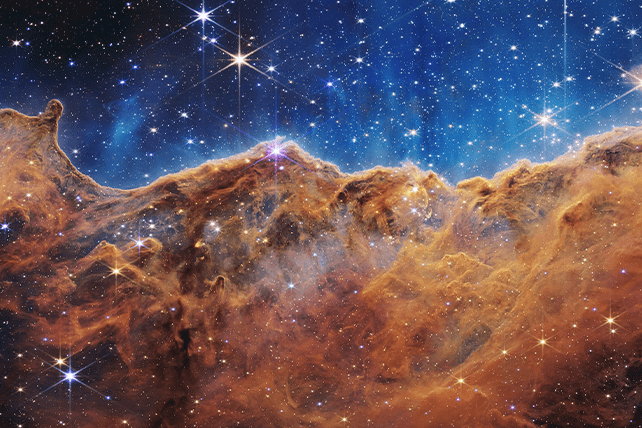VATICAN CITY (RNS) — Renowned physicists, including two Nobel Prize winners, will gather at the Vatican Observatory near Rome next week to ponder the unresolved mysteries of the cosmos and to honor the legacy of Georges Lemaître, the priest who first theorized the Big Bang and the expansion of the universe.
“We think we have put together a dream team that we vehemently hope will lead to some innovative thinking,” said Fabio Scardigli, a theoretic physicist from the Polytechnic Institute of Milan and one of the organizers of the event, during a news conference Tuesday (June 11) presenting the meeting.
The workshop June 16-21 will bring together experts from two sides of the scientific community: those who study cosmology and the theory of relativity, and those physicists who study quantum theory. Organizers of the event hope that the gathering will foster dialogue about these two different and at times irreconcilable theories.
“Among the goals of this conference is to take small steps, through discussion and debate, to reconcile these two theoretic constructions of the 20th century,” Scardigli said.
The Vatican Observatory, called Specola Vaticana, was established in 1891 by Pope Leo XIII to promote dialogue between faith and science. Forty physicists will participate at the gathering, including Adam Riess, who was awarded a Nobel Prize for proving that the expansion of the universe is accelerating, and Roger Penrose, who won the Nobel Prize for his groundbreaking study of black holes.
Participants also include Andrei Linde and Joseph Silk, who revolutionized cosmology through their studies on the first moments of the universe; Wendy Freedman, known for her groundbreaking research on the expansion of the universe; Licia Verde, an expert on dark matter and energy; Cumrun Vafa, who is considered a trailblazer for his studies on geometry and quantum physics; and Edward Witten, best known for his pioneering contributions to string theory.
Participants are scheduled to meet with Pope Francis at the Vatican on June 19, and organizers believe the pope will deliver a speech.
While the Vatican might strike some as an unlikely partner for the advancement of science, the Catholic Church has played a key role in the field of physics throughout history. “I was a scientist for 20 years before I joined the Jesuits, and the most common reaction from fellow scientists was a freedom from them to tell me about the churches they belong to,” said Brother Guy Consolmagno, the director of the Vatican Observatory, during the news conference.
“In the field of cosmology, where we are so much aware of what we do not know, there is an openness to reflect on why there is something instead of nothing,” Consolmagno said, adding that “in the academic world you find more atheists in the literature department than among physicists.”
The verdant setting of Castel Gandolfo, where the Specola resides, offers a neutral ground for scientists to discuss theories, present their research and studies and butt heads on the cosmos’s conundrums, organizers said.
“It’s a place where scientists, researchers and academics can feel free to speak unencumbered by academic structures where they are bound to one type of theoretical current or another,” said the Rev. Gabriele Gionti, the vice director at the observatory.
In 2022, Gionti and the Rev. Matteo Galaverni, a priest in the Diocese of Reggio Emilia-Guastalla in northern Italy, theorized a new way to study gravity after the Big Bang. Their study was highly regarded in the scientific community and published in the prestigious Physical Review D journal. Gionti’s life work has been to attempt to reconcile quantum physics and cosmology, following in the footsteps of another influential physicist and priest: Lemaître.

